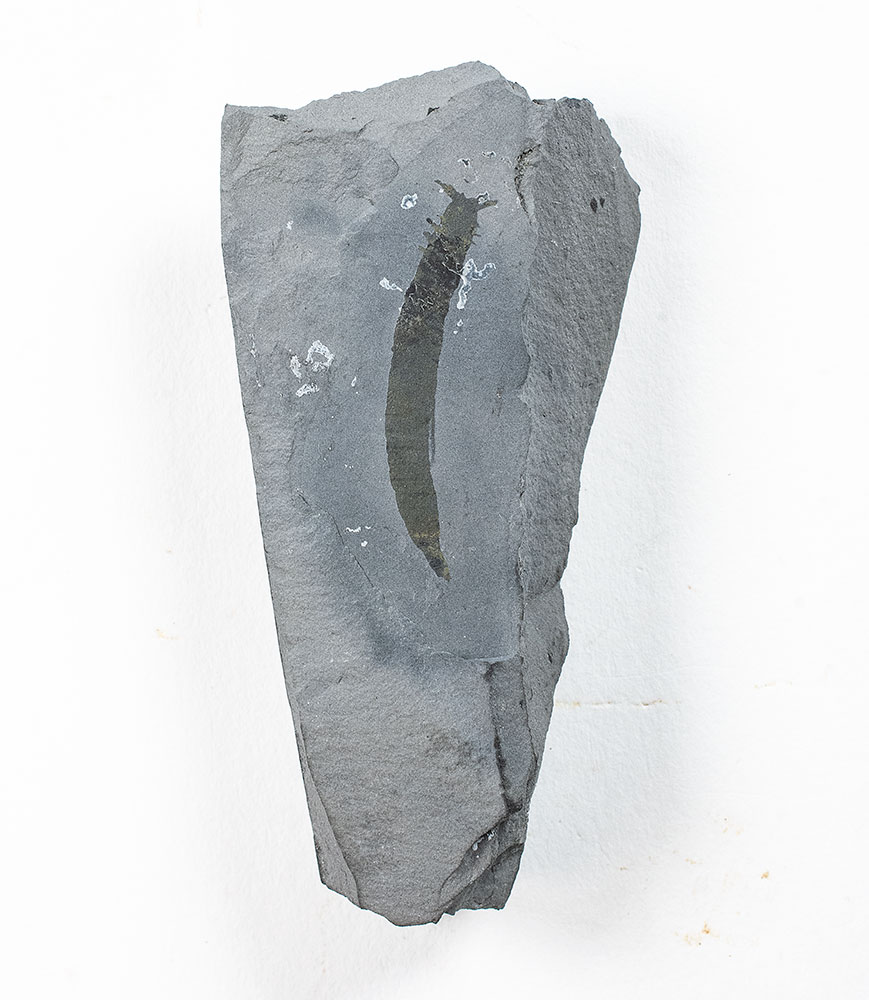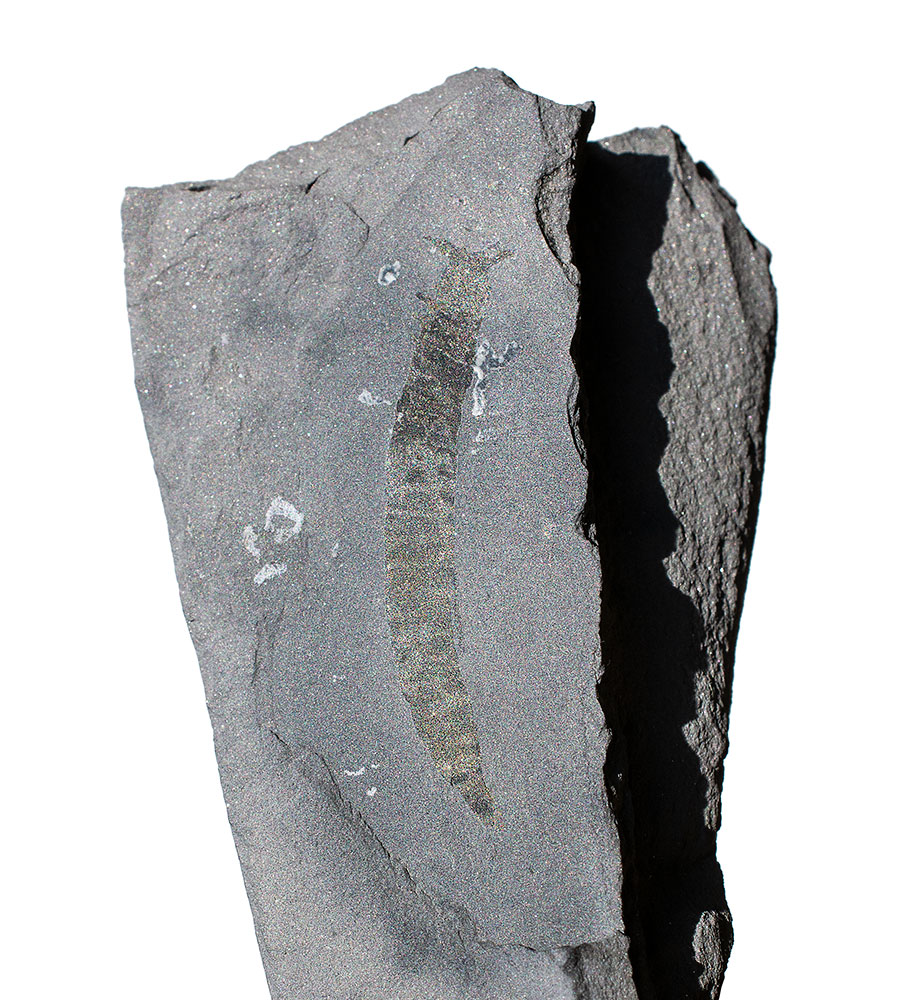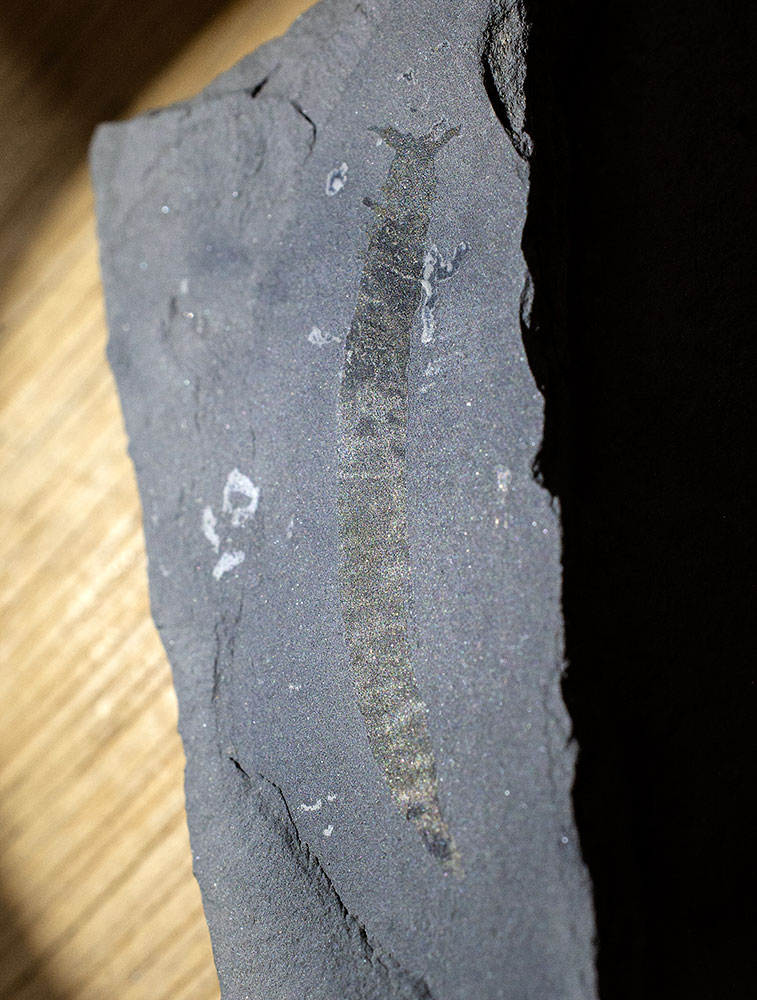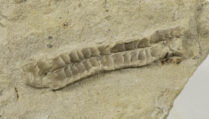Description
Pikaia gracilens
Middle Cambrian
Burgess Shale, Stephens Formation
Field, British Columbia BC Canada.
33mm on 84mm slab. Myomeres are easily visible.
Pikaia is a genus that has been determined to be the most ancient chordate known to science, It represents a step in the evolutionary path toward fishes – a stage not far from when chordates developed bones. Pikaia is so far known only from the Middle Cambrian-age Burgess Shale.
It was a laterally-compressed animal that would have looked like a tiny eel at a glance. Studies have concluded that it swam by throwing its body in a series of side-to-side strokes. Fish would inherit the same swimming movement but with the increased power of a muscled vertebral column and skeleton.
Pikaia is quite rare in the Burgess Shale. Some consider it THE jewel in a fossil collection – more prized than a large tyrannosaur tooth or a sabercat skull. The few specimens that have appeared on the market have come from old private collections and generally because the collector passed away. Once you have one, you don’t want to let it go.







